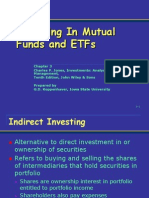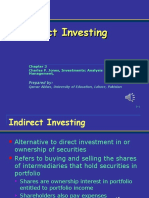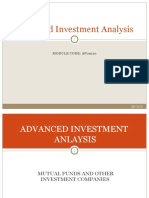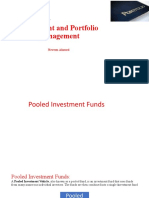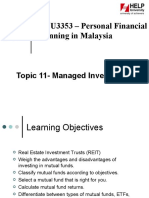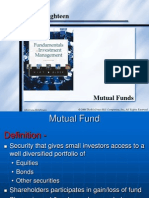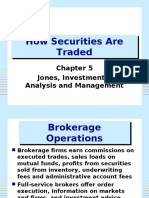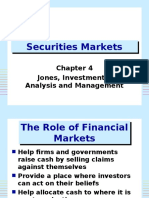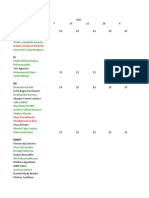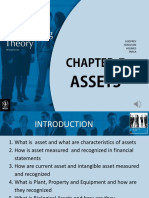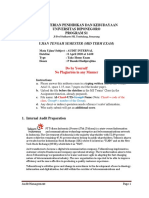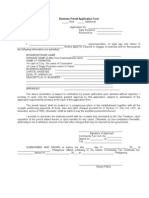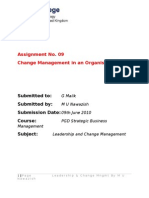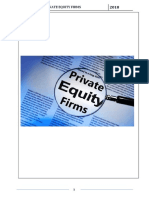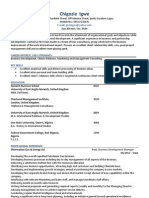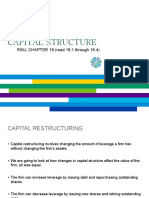Investment
Investment Companies
Companies
Chapter 3
Jones, Investments:
Analysis and Management
1
� Indirect
Indirect Investing
Investing
Alternative to direct investment
in or ownership of securities
Refers to buying and selling the
shares of intermediaries that
hold securities in portfolio
– Shares are ownership interest in
portfolio entitled to portfolio income
– Shareholders also pay expenses
2
� Investment
Investment
Companies
Companies
Financial firm that sells shares to
the public and uses the proceeds
to invest in marketable securities
– Acts as conduit for distribution of
dividends, interest, and realized
gains
– Can elect to pay no federal taxes on
distributions
– Offers professional management 3
� Company
Company Types
Types
Unit investment trusts:
Typically holds an unmanaged,
fixed-income portfolio
– Assets not actively traded once
purchased
– Trust ceases to exist when
securities mature
– Passive investment
4
� Company
Company Types
Types
Closed-end investment companies:
No additional shares sold after
initial public offering
– Share prices determined and trade in
a secondary market
– Price may not equal Net Asset Value
of the shares
» Net Asset Value: Total market value of the
security portfolio divided by total shares
5
� Company
Company Types
Types
Open-end investment companies:
Shares continue to be sold to the
public at NAV after initial sale
that capitalizes the company
– Shares may be sold back
(“redeemed”) to company at NAV
– Company size constantly changes
– Popularly called mutual funds
6
� Mutual
Mutual Fund
Fund
Categories
Categories
Money market mutual funds invest in
portfolio of money market securities
– Taxable or tax-exempt
– Commercial paper important investment
– Average maturity limit: 90 days
– Investors pay a management fee but not
a sales or redemption charge (load)
– Not insured by the federal government
7
� Mutual
Mutual Fund Fund
Categories
Categories
Equity, bond, and income mutual
funds invest in portfolio of securities
consistent with the objectives of the
fund
– Objectives set by the company’s board
– Disclosure of objectives to investors
through a prospectus
– Investment Company Institute classifies
equity, bond and income funds into 18
major categories of investment
objectives
8
� Equity
Equity Funds
Funds
Most assets in equity funds rather
than bond or income funds
Most equity funds are either:
– Value funds, which invest in
undervalued stocks as determined
by fundamental financial analysis
– Growth funds, which invest in stocks
of firms expected to show future
rapid earnings growth
9
� Cost
Cost Considerations
Considerations
Closed-end fund prices may be at
a discount or premium to NAV
– Liquidation value different than price
“Load” funds charge a front-end
fee to cover the costs of selling
the fund to investors
– Funds may also charge a redemption
(back-end) fee or distribution fee
(called 12b-1 fee)
10
� Cost
Cost Considerations
Considerations
All fees must be stated in the
mutual fund prospectus
No-load funds are purchased at
NAV directly from the investment
company
– No sales force expense to cover
– Investors must seek out funds
– Still an annual operating expense paid
out of fund income
11
� Performance
Performance
Reported on a regular basis in the
popular press
Measured over a given time period
as a percent of initial investment
– Total returns include reinvested
dividends and capital gains
– Average annual return reflects the
mean compound growth rate of
investment over a given time period
12
� International
International Funds
Funds
Some mutual funds specialize in
international securities
– US investors can participate in
emerging market economies
– International funds or global funds
emphasize international stocks
– Single-country funds concentrate
assets
» Actively or passively managed
13
� New
New Directions
Directions in
in
Funds
Funds
Mutual fund “supermarkets”
– Various mutual fund families can be
purchased through a single source
– Brokerage account may provide
access
– “Supermarket” managers earn fee
On-line investment services
– Internet used to provide mutual fund
information and make transactions 14


